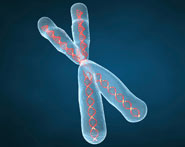


 النبات
النبات
 الحيوان
الحيوان
 الأحياء المجهرية
الأحياء المجهرية
 علم الأمراض
علم الأمراض
 التقانة الإحيائية
التقانة الإحيائية
 التقنية الحيوية المكروبية
التقنية الحيوية المكروبية
 التقنية الحياتية النانوية
التقنية الحياتية النانوية
 علم الأجنة
علم الأجنة
 الأحياء الجزيئي
الأحياء الجزيئي
 علم وظائف الأعضاء
علم وظائف الأعضاء
 الغدد
الغدد
 المضادات الحيوية
المضادات الحيوية|
Read More
Date: 8-11-2015
Date: 8-12-2020
Date: 8-12-2020
|
Immunologic tolerance is a lack of response to anti gens that is induced by exposure of lymphocytes to these antigens. When lymphocytes with receptors for a particular antigen encounter this antigen, any of several outcomes is possible. The lymphocytes may be activated to proliferate and to differentiate into effector and memory cells, leading to a productive immune response; antigens that elicit such a response are said to be immunogenic. The lymphocytes may be functionally inactivated or killed, resulting in tolerance; antigens that induce tolerance are said to be tolerogenic. In some situations, the antigen-specific lymphocytes may not react in any way; this phenomenon has been called immunologic ignorance, implying that the lymphocytes simply ignore the presence of the antigen. Normally, microbes are immunogenic and self-antigens are tolerogenic.
The choice between lymphocyte activation and tolerance is determined largely by the nature of the antigen and the additional signals present when the antigen is displayed to the immune system. In fact, the same anti gen may be administered in different ways to induce an immune response or tolerance. This experimental observation has been exploited to analyze what factors determine whether activation or tolerance develops as a consequence of encounter with an antigen.
The phenomenon of immunologic tolerance is important for several reasons. First, as we stated at the outset, self antigens normally induce tolerance, and failure of self-tolerance is the underlying cause of auto immune diseases. Second, if we learn how to induce tolerance in lymphocytes specific for a particular anti gen, we may be able to use this knowledge to prevent or control unwanted immune reactions. Strategies for inducing tolerance are being tested to treat allergic and autoimmune diseases and to prevent the rejection of organ transplants. The same strategies may be valuable in gene therapy to prevent immune responses against the products of newly expressed genes or vectors and even for stem cell transplantation if the stem cell donor is genetically different from the recipient.
Immunologic tolerance to different self antigens may be induced when developing lymphocytes encounter these antigens in the generative (central) lymphoid organs, a process called central tolerance, or when mature lymphocytes encounter self- antigens in peripheral (secondary) lymphoid organs or peripheral tissues, called peripheral tolerance (Fig. 1). Central tolerance is a mechanism of tolerance only to self antigens that are present in the generative lymphoid organs—namely, the bone marrow and thymus. Tolerance to self antigens that are not present in these organs must be induced and maintained by peripheral mechanisms. We have only limited knowledge of which self antigens induce central or peripheral tolerance or are ignored by the immune system.
With this brief background, we proceed to a discussion of the mechanisms of immunologic tolerance and how the failure of each mechanism may result in auto immunity. Tolerance in T cells, particularly CD4+ helper T lymphocytes, is discussed first because many of the mechanisms of self-tolerance were defined by studies of these cells. In addition, CD4+ helper T cells orchestrate virtually all immune responses to protein antigens, so tolerance in these cells may be enough to prevent both cell-mediated and humoral immune responses against self proteins. Conversely, failure of tolerance in helper T cells may result in autoimmunity manifested by T cell mediated attack against tissue self antigens or by the production of autoantibodies against self proteins.
Fig1. Central and peripheral tolerance to self antigens. Central tolerance: Immature lymphocytes specific for self antigens may encounter these antigens in the generative (central) lymphoid organs and are deleted; B lymphocytes may change their specificity (receptor editing); and some T lymphocytes develop into regulatory T cells. Some self-reactive lymphocytes may complete their maturation and enter peripheral tissues. Peripheral tolerance: mature self-reactive lymphocytes may be inactivated or deleted by encounter with self antigens in peripheral tissues or suppressed by regulatory T cells.



|
|
|
|
"وجه أوزمبيك".. تحذير من عرض غير متوقع لدواء إنقاص الوزن
|
|
|
|
|
|
|
"واتساب" يتوقف عن العمل في 3 هواتف شهيرة.. هل تمتلك أحدها؟
|
|
|
|
|
|
|
مدينة الفردوس الترفيهية توفر أكثر من 60 جلسة عائلية عامة وخاصة
|
|
|